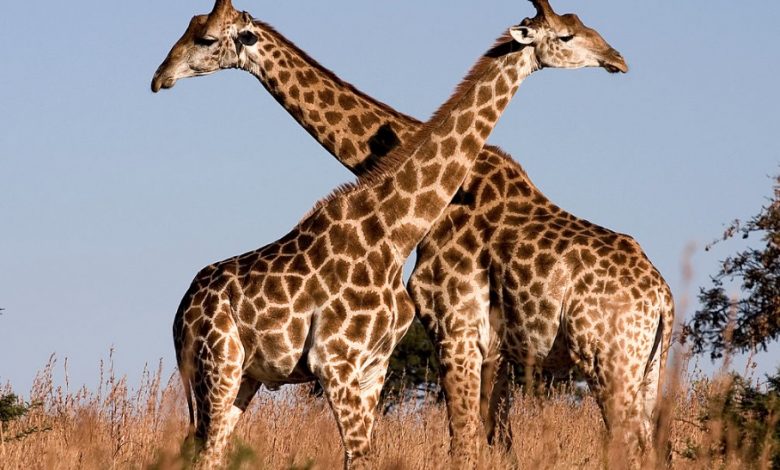The elongation

The elongation of the neck appears to have started early in the giraffe lineage. Comparisons between giraffes and their ancient relatives suggest that vertebrae close to the skull lengthened earlier, followed by lengthening of vertebrae further down.[12] One early giraffid ancestor was Canthumeryx which has been dated variously to have lived 25–20 million years ago (mya), 17–15 mya or 18–14.3 mya and whose deposits have been found in Libya. This animal was medium-sized, slender and antelope-like. Giraffokeryx appeared 15 mya in the Indian subcontinent and resembled an okapi or a small giraffe, and had a longer neck and similar ossicones.[11] Giraffokeryx may have shared a clade with more massively built giraffids like Sivatherium and Bramatherium.[12]
Giraffids like Palaeotragus, Shansitherium and Samotherium appeared 14 mya and lived throughout Africa and Eurasia. These animals had bare ossicones and small cranial sinuses and were longer with broader skulls.[11][12] Paleotragus resembled the okapi and may have been its ancestor.[11] Others find that the okapi lineage diverged earlier, before Giraffokeryx.[12] Samotherium was a particularly important transitional fossil in the giraffe lineage as its cervical vertebrae was intermediate in length and structure between a modern giraffe and an okapi, and was more vertical than the okapi’s.[13] Bohlinia, which first appeared in southeastern Europe and lived 9–7 mya was likely a direct ancestor of the giraffe. Bohlinia closely resembled modern giraffes, having a long neck and legs and similar ossicones and dentition.[11]
The extinct giraffid Samotherium (middle) in comparison with the okapi (below) and giraffe. The anatomy of Samotherium appears to have shown a transition to a giraffe-like neck.[13]
Bohlinia entered China and northern India in response to climate change. From there, the genus Giraffa evolved and, around 7 mya, entered Africa.[14] Further climate changes caused the extinction of the Asian giraffes, while the African giraffes survived and radiated into several new species. Living giraffes appear to have arisen around 1 mya in eastern Africa during the Pleistocene.[11] Some biologists suggest the modern giraffes descended from
